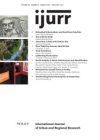Social and tenure‐mixing policies are recurrently deployed as a means to tackle urban deprivation and reduce social inequalities on both sides of the Atlantic, albeit without sound evidence, with policies often resulting in gentrification, social polarization or dispersal towards peripheral areas. This article explores whether housing‐tenure diversification is a device for alleviating deprivation in terms of increasing socioeconomic opportunities (production) and access to resources (consumption), and empirically contributes to wider debates on inequality, segregation and neighbourhood effects. Quantitative and qualitative longitudinal analyses examine the extent to which in Greater London there are greater opportunities and access to resources amongst social tenants in mixed‐tenure neighbourhoods than amongst those in concentrations of social housing. Changes in deprivation levels according to the Index of Multiple Deprivation (IMD) are contrasted and unpacked, and correlations between tenure, ethnicity, income, location, neighbourhood affordability and deprivation are investigated. The research demonstrates that social tenants do experience differing opportunities and access to resources, but these are not dependent on, or improved by, the level of tenure mix within the neighbourhood. Instead, integration of area‐based and people‐based policy, as well as decommodified access to welfare services (such as education, training and employment opportunities), is crucial. Furthermore, the IMD as an evidence base for policy formulation is contested and the neighbourhood effects are challenged.
Details
Written by:
Sonia Arbaci, Ian Rae
Digital Object Identifier (DOI)
10.1111/j.1468-2427.2012.01145.x
About DOI
Read full article as PDF
Read full article as HTML
See the references for this article
